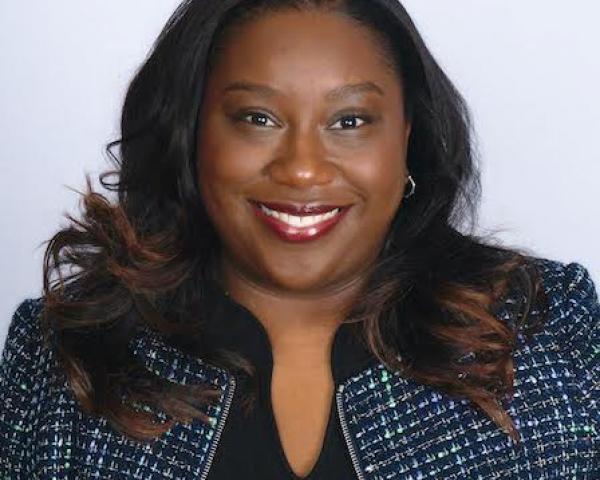Diversity and inclusion (D&I) have been priorities for the insurance industry for years. However, there have been fundamental limitations on progress that have gone under-addressed. While the state of D&I in the insurance industry is stronger than ever, we limit the potential to advance these issues without having a meaningful, clear-eyed examination of a few basic issues.
Cultural Disconnect
Organizations are only as strong as their culture or brand. Prior to joining Zurich, I owned a consulting firm. As a consultant, I learned first-hand that no matter how great the marketing efforts might be, if a company culture or brand is lackluster there will be always be a fundamental disconnect with customers.
Company culture is one of the areas where we see more prominent diversity and inclusion issues plaguing the insurance industry. As a young woman, I had experiences in being heard, or unheard, that have shaped my perspective. While I believe there are opportunities to make a mark in the industry if you put the effort in, I also see barriers in corporations that don’t allow for people to be their authentic selves. Organizations that adhere to a rigid hierarchy, with leadership teams unable or unwilling to innovate, throw up roadblocks to D&I due to preconceived notions. These are the companies that fail to seek diversity of experience, culture, education, personality, perspective and thinking. These organizations rarely embrace authenticity in employees, seeking conformity instead. This approach limits worker experience and professional growth opportunities.
Successful company cultures are lived, as are toxic and limiting company cultures. Companies that are sincere about D&I have to live it.
COVID-19 Side Effects
When the pandemic pushed the U.S. workforce to go remote, it became clear the virus was hitting the Black and Latinx communities more harshly. Access to high-speed internet, availability of space in the home for one or more remote workers and students, healthcare accessibility and urban food deserts, among other matters, were all existing obstacles. But, while not always apparent in the workplace, these issues became clear challenges for many workers and their employers after the pandemic shutdown.
As an industry focused on managing risk, we need to consider the risk of not properly supporting the communities we represent and their well-being. Our leaders, both in the insurance industry and beyond, must remember that not everyone is experiencing the events of 2020 equally. We may be “in this together,” but we are not in it together equally. Greater empathy is essential to greater diversity and inclusion.
It Starts at the Top
One of the clearest signs of the lack of progress on D&I issues in corporations is the lack of diverse talent at the leadership level. The standard response for most industries on this point is to note the lack of diverse talent available. This bias has been consistently used to justify a lack of executive team diversity. Another defensive argument is that companies work to ensure all employees have the same opportunities to advance their careers. This latter rationale has been used to justify maintaining the same systems and processes that have been in place at corporations for years. We may add employee resource groups, mentoring programs and programming, but the systems have not changed.
In my role focused on diversity, inclusion, equity and belonging at Zurich, I invite leaders to question these biases. What if there was ample, diverse, executive-level talent available? Would the company’s leadership look dramatically different? Would it be more diverse? Would the systems and processes currently in place to nurture and advance careers change if we proved not all employees have equal access to opportunity? If the answer is no, then we have to acknowledge our inherent biases and make changes.
These biases are overcome when leaders are open to and can rely on those around them to provide critical insight. Recruiting is one example. What efforts have their organizations made to find great talent? If the slate offered by recruiters is not diverse, do they push back and request a more diverse pool? Do they leverage their industry relationships to find that talent? Does the executive team hold leaders to account for seeking talent that mirrors the individuals and communities they serve?
See also: Industry Still Lags on Diversity
Recruitment is just one priority. Expanding in-house talent is also essential. To complete my doctorate, I spent a lot of time researching what companies do to advance diverse people in their careers. Do diverse professionals have the same access? The same mentor opportunities? The same advocates? In my experience, the answer is often no.
This could be an affinity bias. We naturally want to help those who remind us of ourselves. We need to understand that some people advance in their careers, and some do not, precisely because of these biases. Insurance industry leaders need to face this difficult reality to create better opportunities for our diverse talent.
What Can Change?
One solution Zurich has embraced is called the Inclusion Cohort, a program we launched last year. It’s designed to better prepare diverse talent for potential leadership roles, offering them leadership assessments, identifying strengths and areas for development and providing them with mentors. Our priority was to build the cohort so members would have a sense of camaraderie and shared success. Today, more than half of the initial participants have been tapped for new responsibilities, with another earning a leadership position. Our goal is to scale similar programs across the company.
We are also working on extensive anti-racism programming for our executive and leadership teams to help them better understand diverse experiences, which helps build empathy and motivation to change.
These and other efforts are steps Zurich is taking to promote a more diverse industry future, and they are shareable.
Organizations like the Insurance Industry Charitable Foundation (IICF) have proved critical to highlighting the industry’s D&I efforts. Their meetings and events, like the upcoming virtual Inclusion in Insurance Forum, are instructive on the challenges commonly faced across the industry in building equity and belonging. These events allow individual organizations like ours to work together to share and adopt meaningful strategies.
Recognizing the role that culture, global events like the pandemic and leadership and its priorities have on diversity, inclusion, equity and belonging within the industry is the first step to meaningful change. That change can sometimes be slow in coming, but it does come. Now is our chance as an industry to step up and create the diverse and inclusive future we need.






